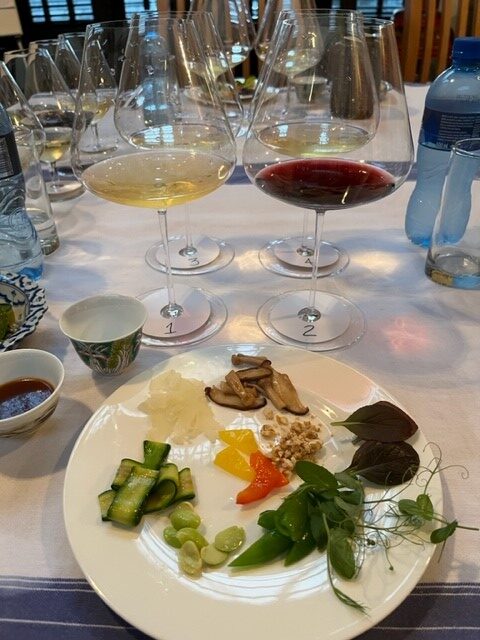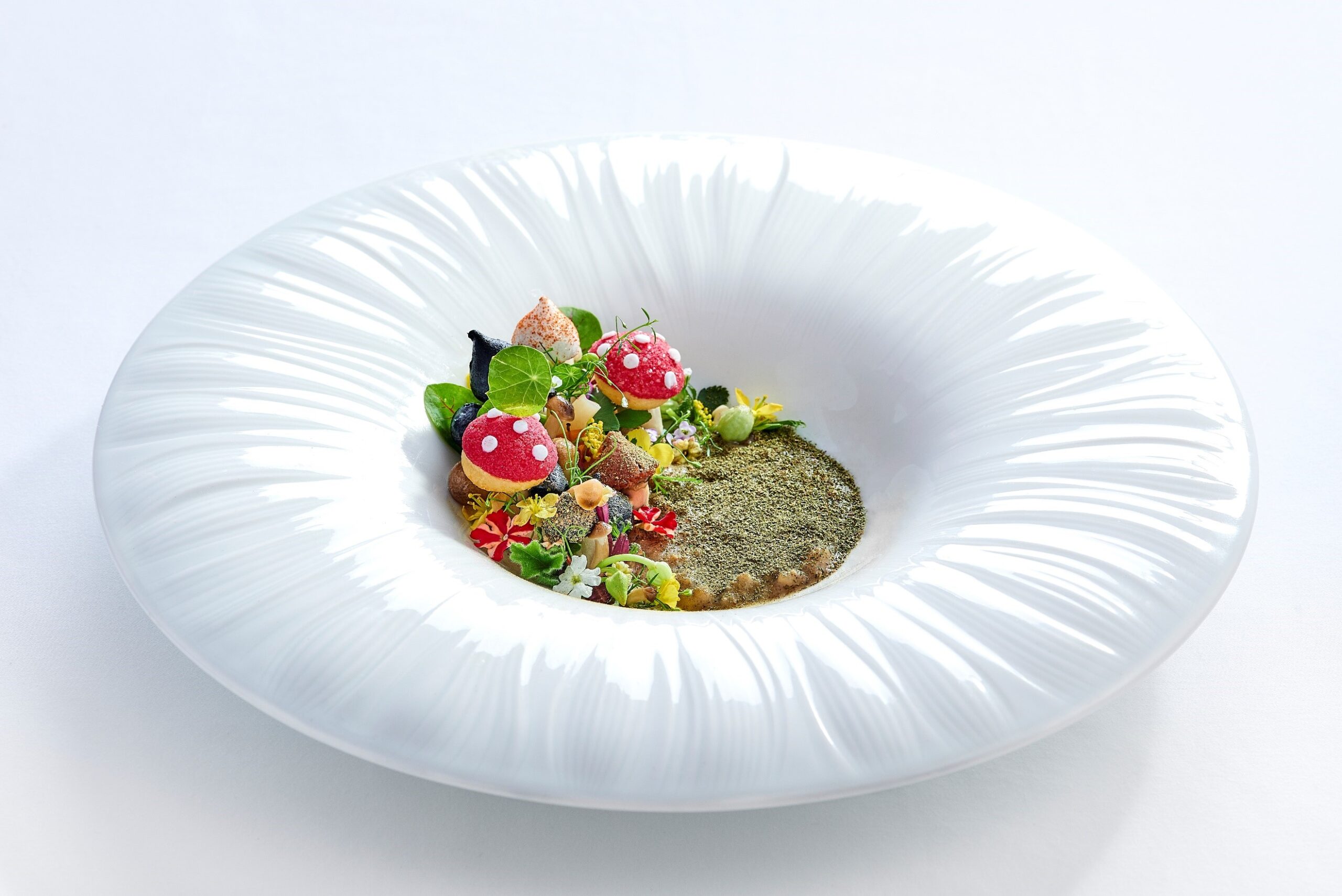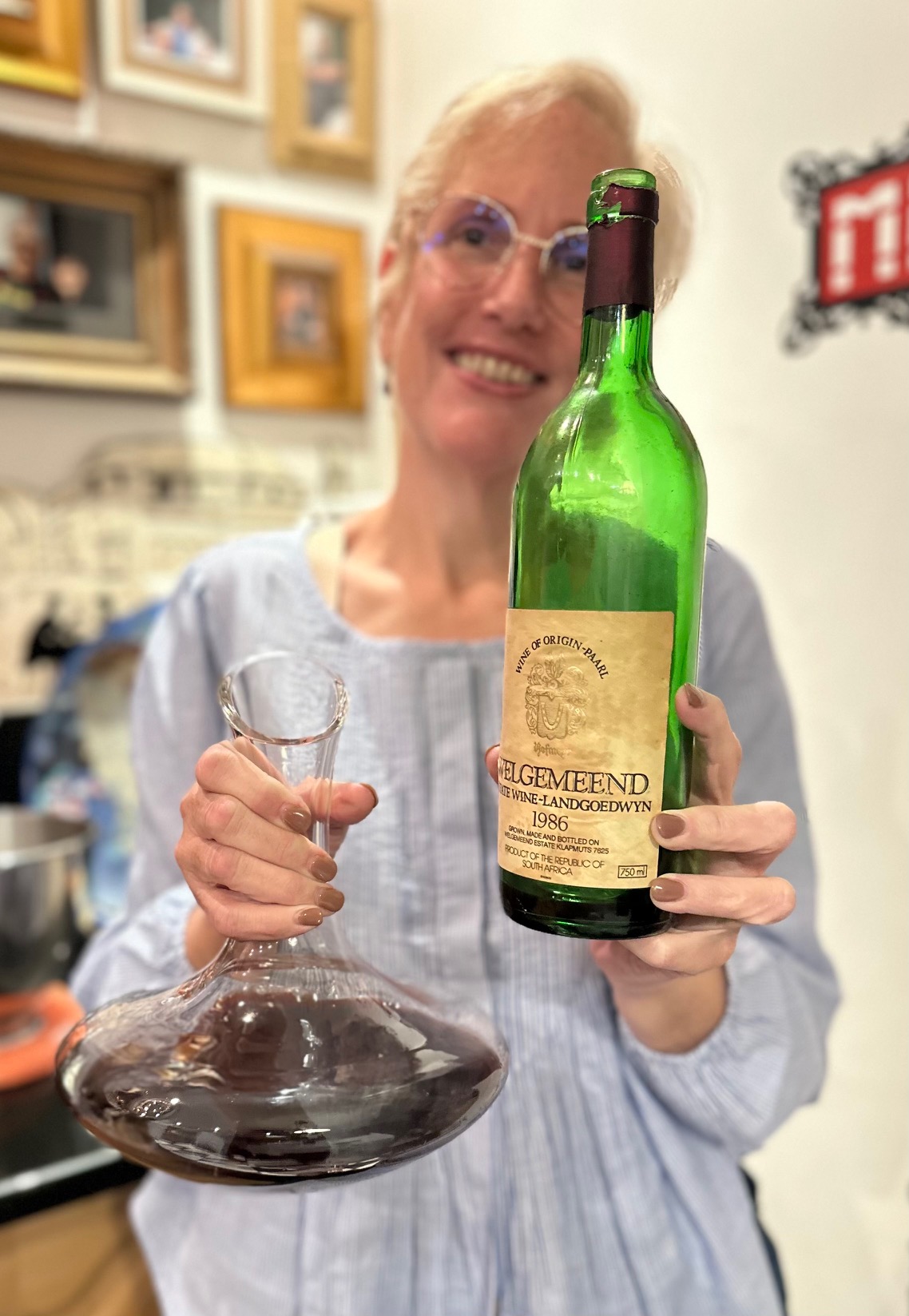nouvelles
Principes de l'appariement

L'équipe du restaurant Mosaic au Château des Tesnières prend très au sérieux les accords mets-vins.
La chef Chantel Dartnall prépare minutieusement chaque plat, le déconstruit pour en tester chaque élément avec des vins bien choisis avant de déguster l'assiette délicieusement composée. Il m'incombe de me familiariser avec les ingrédients, le menu et toutes les subtilités de la chef Chantel afin d'envisager la meilleure association possible et de créer le nirvana de l'accord. Une fois les plats dégustés par l'équipe, les discussions abondent, les notes sont comptabilisées et les décisions d'association sont finalement prises. Le processus est répété au fur et à mesure que chaque plat évolue, bien avant qu'il ne figure sur le menu de dégustation ou qu'il ne soit proposé aux clients.





Nous reviendrons plus en détail sur le concept et les détails des accords déconstruits dans un prochain article. Nous proposons une gamme étourdissante de choix dans nos caves primées ou dans nos offres de dégustation sur mesure. Mais qu'en est-il si vous avez un dîner à la maison en milieu de semaine, un dîner romantique pour deux, une expérience décontractée au bistrot ou un dîner de fête entre amis - comment choisir le vin qui accompagnera votre repas ?
J'ai récemment pris connaissance d'une bande dessinée diffusée sur les réseaux sociaux et intitulée "L'accord des vins à l'âge de pierre", représentant un couple debout à côté d'un feu ouvert, avec pour légende "Règle simple : s'il essaie de nous manger, servez du rouge. S'il nous fuit, servez du blanc". Commençons par supprimer toutes les règles. Le vin blanc avec la viande blanche et le vin rouge avec la viande rouge sont des notions dépassées. L'idée d'un accord parfait l'est tout autant. On s'en approche à peine, mais on a le vertige de ne pas savoir s'il faut porter la fourchette ou le verre de vin à ses lèvres.
Certes, il existe des accords classiques. Pensez au champagne et aux huîtres. Le bourgogne avec le canard. Le cabernet sauvignon avec le bœuf saignant. Sancerre et fromage de chèvre. Sauternes et foie gras. Chenin blanc doux et tarte tatin. Brunello di Montalcino avec un ragoût de sanglier. Un rosé de Provence bien frais avec une salade niçoise. Un Riesling sec avec un plat thaïlandais épicé. Un Sherry Manzanilla avec des olives farcies aux amandes. En réalité, les accords mets-vins dépendent en grande partie de vos préférences personnelles.
Laissez-moi vous révéler un petit secret. Presque tous les vins s'accordent avec ce qui se trouve dans votre assiette. Les arômes et les saveurs dépendent de la capacité sensorielle, de la sensibilité et de l'expérience personnelle de chacun. Si vous aimez votre café avec beaucoup de crème et de sucre, il y a de fortes chances que les vins très acides ou tanniques ne soient pas à votre goût. Chaque nez et chaque palais est différent. L'examen de la structure du vin ou du plat, de son acidité, de son degré de douceur, de son corps, de sa profondeur et de sa texture, permet d'en savoir beaucoup plus.
Plutôt que des règles, voici quelques principes de base à prendre en compte lors du choix de votre prochain vin :
"La recherche du parfait ne devrait jamais être l'ennemi du bon", a écrit Eric Asimov, critique de vin au New York Times. Si vous choisissez un vin ou un style de vin que vous aimez et un plat que vous aimez, vous ne pouvez pas vraiment vous tromper. Dans le meilleur des cas, vous trouverez une joyeuse harmonie, mais s'ils ne s'accordent pas tout à fait, vous aurez toujours un beau verre de vin et un bon plat à savourer individuellement.
Pensez à l'intensité. Pensez à l'intensité de la saveur et au poids du vin et du plat. Les vins délicats et légers sont facilement écrasés par des plats lourds aux saveurs intenses. Un vin corsé et boisé peut également écraser des plats plus délicats. Certains plats qui ne sont pas riches ou lourds peuvent avoir une saveur intense et leur âcreté peut submerger un vin. Il y a tant de joie et de plaisir à expérimenter avec le vin et la nourriture.
A comme Acide. L'acidité d'un vin apporte de la fraîcheur et du relief, de la même manière qu'un filet de citron, un zeste d'agrume ou un trait de vinaigre balsamique peuvent agrémenter un plat. Si l'acidité du plat est supérieure à celle du vin, ce dernier peut sembler plutôt terne. L'acidité du plat augmente la perception du corps, de la douceur et du fruité du vin et diminue simultanément la perception de l'acidité du vin.
Une pincée de sel ? Le sel est sans doute l'élément alimentaire le plus favorable au vin, car il peut en fait adoucir certains des aspects les plus rudes du vin, en augmentant la perception du corps du vin. Le sel atténue également la perception de l'astringence, de l'amertume et de l'acidité d'un vin.
Une pilule amère à avaler. Chacun d'entre nous a des tolérances différentes à l'amertume, ce qui rend ce principe très subjectif. Ce n'est pas parce que vous êtes sensible à un composé amer que vous le serez à tous. L'amertume a tendance à être composée. Ainsi, même si vous trouvez une amertume agréable dans un plat et une amertume équilibrée dans un vin, lorsque vous les combinez, ils peuvent se révéler exponentiellement plus amers et plutôt désagréables.
Le mot en F. La graisse se trouve dans le lait, le beurre, la crème, l'huile, les fromages et les noix. La plupart des protéines contiennent des matières grasses. Pensez à la façon dont les sauces contenant ces ingrédients peuvent donner du corps à un plat ou en rehausser la saveur. Si les matières grasses contribuent positivement à la saveur et à la sensation en bouche, elles rendent le vin moins acide. Le principe est donc d'associer des vins plus acides à des plats plus riches en matières grasses.
Certains l'aiment piquant. Moins lié au goût et à la sensibilité, le piment dans les aliments est une sensation tactile qui augmente la perception de l'amertume, de l'astringence, de l'acidité et de la brûlure de l'alcool. L'intensité de cette réaction augmente avec le degré d'alcool du vin. Le fruité, le corps, la richesse et la douceur d'un vin sont tous atténués par la chaleur du piment.
Comprendre l'umami. En japonais, umami signifie "essence du délice". Avec le sucré, l'acide, l'amer et le salé, l'umami est l'une de nos cinq sensations gustatives fondamentales. Les produits fermentés, le nori, les champignons et les bouillons de viande ont un caractère umami, tout comme les asperges, les œufs et les fromages à pâte molle. Les plats umami accentuent la perception de l'amertume, de l'astringence et de l'acidité d'un vin. De nombreux aliments ont un caractère umami combiné au salé, par exemple : le poisson salé, les viandes fumées et les fromages à pâte dure comme le parmesan. Cela peut contribuer à atténuer les perceptions négatives.
Un cœur sucré ? N'oubliez pas que le goût sucré n'est pas uniquement lié aux desserts. Les sauces peuvent être sucrées. Les fruits, lorsqu'ils sont mûrs, sont sucrés. Certains légumes, comme les carottes et les betteraves, peuvent également être perçus comme sucrés. Même les fruits de mer peuvent paraître sucrés. La douceur d'un plat augmente la perception de l'amertume, de l'astringence et de l'acidité du vin. Un bon principe général est d'opter pour des vins accompagnant des plats sucrés dont le niveau de sucrosité est égal ou supérieur à celui du plat.
Mettez de côté les règles et prenez plaisir à explorer les différentes possibilités qui s'offrent à vous. Tout en travaillant sans relâche à la recherche de l'accord parfait, nous cherchons à comprendre vos préférences personnelles et vos sensibilités uniques afin de vous offrir la meilleure expérience d'accord possible.
Appréciez ce qu'il y a dans votre verre ! Santé !
Debi
Debi van Flymen
Directrice des vins
Restaurant Mosaic au Châteaux des Tesnières